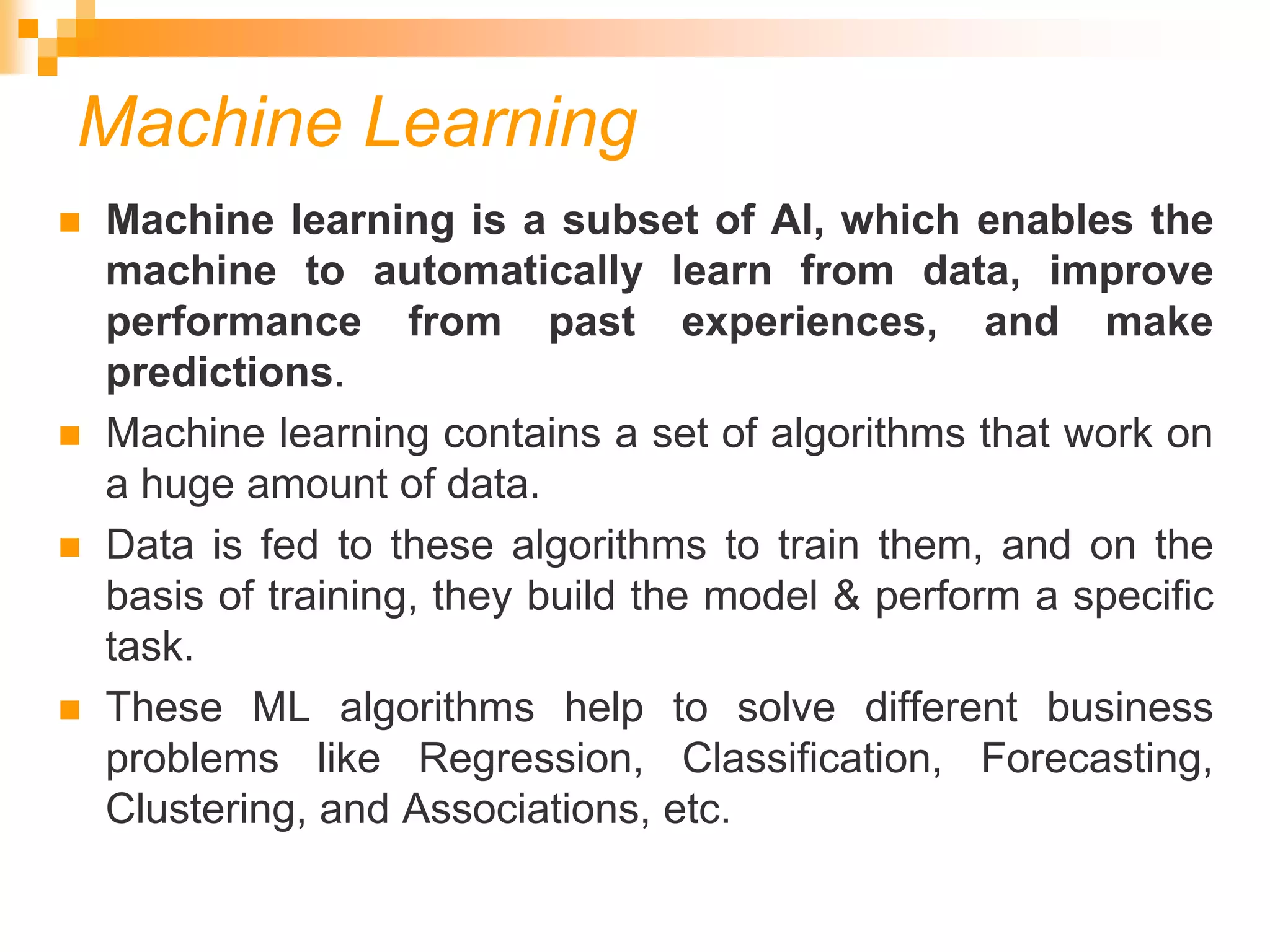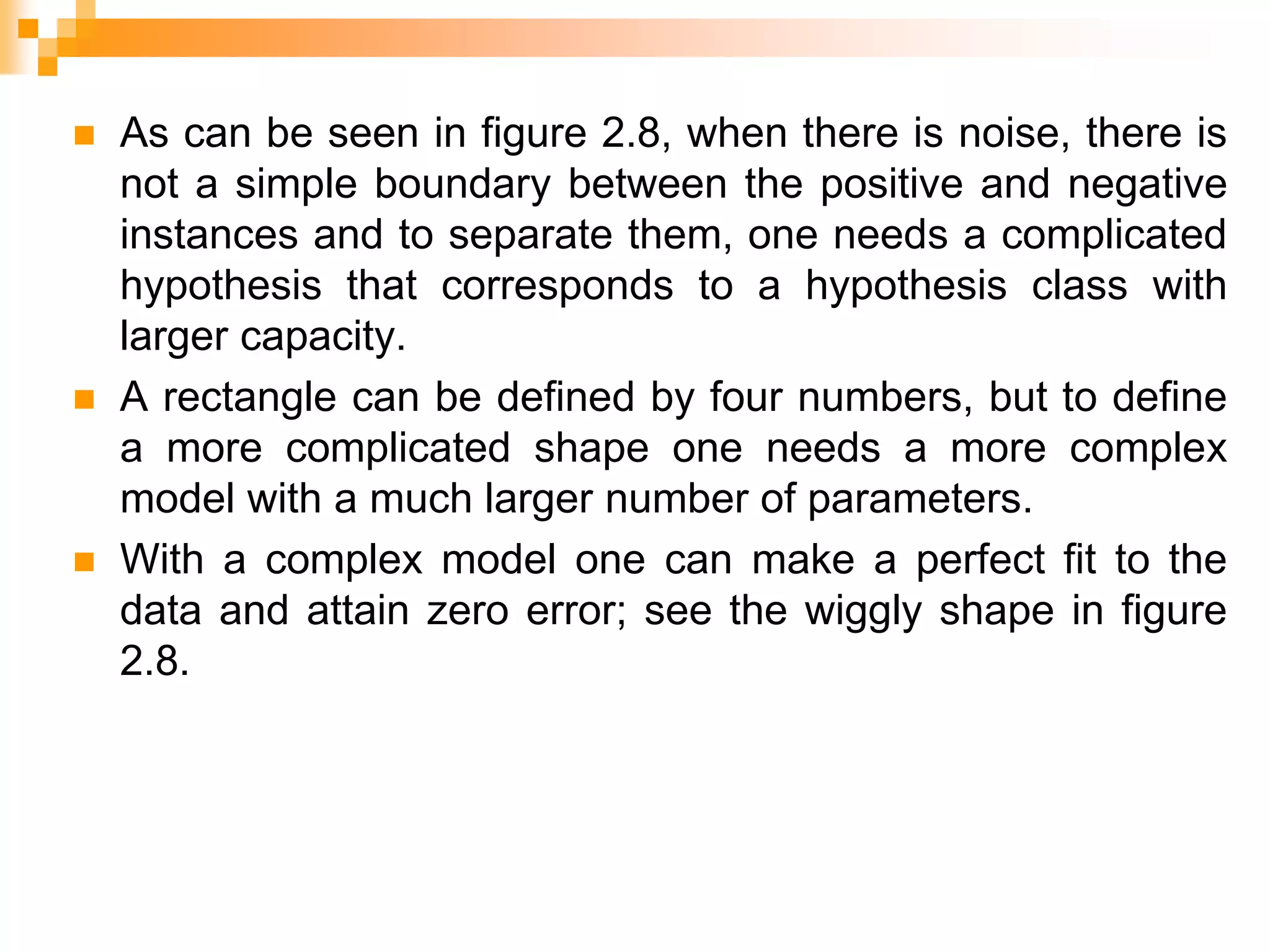This chapter discusses supervised machine learning. It begins by explaining the concept of learning a class from labeled examples to make predictions. This involves finding a description that classifies the positive and negative examples. The chapter then discusses key concepts like the version space that contains all hypotheses consistent with the training data, and the VC dimension which measures a hypothesis space's capacity. It also covers techniques like probably approximately correct learning for generalization. The chapter outlines different types of supervised learning problems like classification of multiple classes and regression to predict numeric values.




















![Algorithmic steps:
Initially :
G = [[?, ?, ?, ?, ?, ?], [?, ?, ?, ?, ?, ?], [?, ?, ?, ?, ?, ?],
[?, ?, ?, ?, ?, ?], [?, ?, ?, ?, ?, ?], [?, ?, ?, ?, ?, ?]]
S = [Null, Null, Null, Null, Null, Null]
For instance 1 :
<'sunny','warm','normal','strong','warm ','same’>
and positive output.
G1 = G
S1 = ['sunny','warm','normal','strong','warm ','same']](https://image.slidesharecdn.com/supervisedlearning-230129163740-eb74c396/75/Supervised_Learning-ppt-21-2048.jpg)
![For instance 2 :
<'sunny','warm','high','strong','warm ','same’>
and positive output.
G2 = G
S2 = ['sunny','warm',?,'strong','warm ','same’]
For instance 3 :
<'rainy','cold','high','strong','warm ','change’>
and negative output.
G3 = [['sunny', ?, ?, ?, ?, ?], [?, 'warm', ?, ?, ?, ?],
[?, ?, ?, ?, ?, ?], [?, ?, ?, ?, ?, ?], [?, ?, ?, ?, ?, ?],
[?, ?, ?, ?, ?, 'same']]
S3 = S2](https://image.slidesharecdn.com/supervisedlearning-230129163740-eb74c396/75/Supervised_Learning-ppt-22-2048.jpg)
![For instance 4 : <'sunny','warm','high','strong','cool','change’>
and positive output.
G4 = G3
S4 = ['sunny','warm',?,'strong', ?, ?]
At last, by synchronizing the G4 and S4 algorithm produce
the output.
Output :
G = [['sunny', ?, ?, ?, ?, ?], [?, 'warm', ?, ?, ?, ?]]
S = ['sunny','warm',?,'strong', ?, ?]](https://image.slidesharecdn.com/supervisedlearning-230129163740-eb74c396/75/Supervised_Learning-ppt-23-2048.jpg)

















